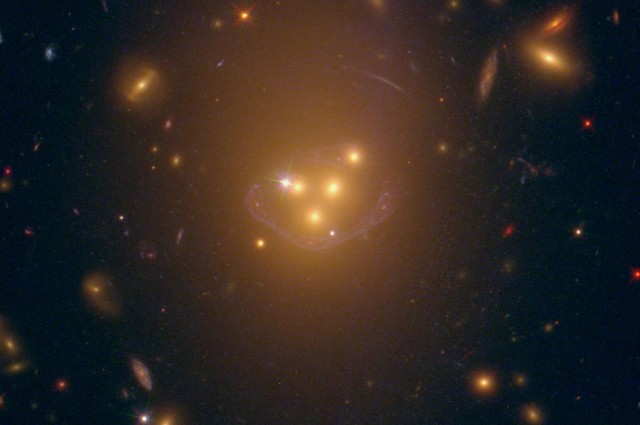
For the first time, scientists have confirmed what they have long suspected: Complex organic molecules exist in the disks from which planets form. While it is a big step from these observed molecules to living things, the discovery demonstrates that at least some planets form with the essential elements of life already present.
The observation of the star MWC 480, reported in Nature, was made using the Atacama Large Millimeter/submillimeter Array (ALMA). Barely a million years old, MWC 480 is surrounded by a disk from which planets are expected to be born.
In the outer reaches of the disk, ALMA picked up the spectral signatures of methyl cyanide (CH3CN), cyanoacetalyne (HC3N) and hydrogen cyanide (HCN) signatures. The distance from MWC 480 indicated to the observing team that these molecules are in the region that will one day become MWC’s Kuiper Belt, leading to cyanides becoming incorporated into comets.
“Studies of comets and asteroids show that the solar nebula that spawned the Sun and planets was rich in water and complex organic compounds,” noted lead author Dr. Karin Öberg, an astronomer with the Harvard-Smithsonian Center for Astrophysics. “We now have even better evidence that this same chemistry exists elsewhere in the Universe, in regions that could form solar systems not unlike our own.”
The concentrations observed are similar (0.01%) to those seen in the comets of our own solar system. This is despite the fact that MWC 480 is no solar twin, having a mass 1.8 times that of the sun. The disk is 10 times the mass of the one required to form the solar system and 2-3 times warmer.
Complex molecules have been detected beyond the solar system before. However, these have been in colder and more stable environments than the protoplanetary disk, raising the question of whether any such molecules could survive proximity to a forming star. Curiously, methyl cyanide appears to have multiplied or become concentrated in the process. The concentration is higher than in the interstellar clouds where complex molecules have been observed before. Indeed, there is more methyl cyanide orbiting MWC 480 than there is water in the Earth’s oceans.
The outer edge of MWC 480’s disk is too cold to support life, and probably always will be. However, comets from the outer solar system are thought to have brought water to Earth, and future planets in MWC 480’s habitable zone may find themselves seeded with complex organic molecules as well.
“From the study of exoplanets, we know the Solar System isn’t unique in its number of planets or abundance of water,” concluded Öberg. “Now we know we’re not unique in organic chemistry. Once more, we have learnt that we’re not special. From a life in the Universe point of view, this is great news.”
Via IFL Science






